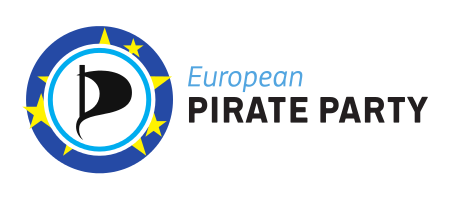As governments around the world continue to increase the surveillance of the internet and all communication, it is to be expected that also the control of content on the internet will become more and more tightly meshed. This is also to be seen in the context of the European Union’s plans to run even private communications such as emails or chat messages through surveillance filters in order to filter out “illegal” content and report it directly to the authorities. More details on these plans can be found on the website of the German Pirateparty politician Patrick Breyer.
On the one hand, this would subject all citizens to total surveillance without any initial suspicion. On the other hand, it is to be feared that the list of undesirable content to be blocked and filtered will then be expanded over time, leading to a slow entry into wide spread censorship. For once, the corresponding technical censorship infrastructures have been set up and prescribed across the board, it can be assumed that the list of desirables will grow longer and longer over time. Of course, it is possible that the ECJ or the Federal Constitutional Court will overturn such measures because they may violate fundamental human rights. However, there is no guarantee that this will happen, and such lawsuits can take several years before a fundamental decisions are made.
For this reason, it is now important for all freedom loving people to learn the means of “digital self-defence” and how to use decentralised infrastructures that are constructed in such a way that they can largely evade mass surveillance by big corporations and state services. This is also important for the existence of our democracy. Among others, whistleblowers who pass on confidential content to the press need protection from surveillance, as do journalists and bloggers who research sensitive issues. The ever-increasing mass surveillance thus also endangers the freedom of the press, which is a pillar of our democracy. People in repressive countries like Russia or Turkey also dependent on technologies that allow them to circumvent state surveillance and censorship.
In this article, i would like to present some of the most powerfull free software tools with which this is possible.
1. Tribler
Tribler is a anonymous BitTorrent client that not only has built-in end-to-end encryption, but can also obfuscate the IP addresses of users through a functionality similar to the TOR network, making tracking activties much more difficult. Since the Tribler network is completely decentralised, it cannot be switched off or filtered by a central authority easily. Any files can therefore be shared and exchanged without censorship and without being restricted by any upload filters or the like.
Tribler has been developed for 9 years as part of a scientific project at the Delft University of Technology and is available as open source software. The software has a built-in search function that makes it possible to find and download files that have been shared with the network by other users. Since the project also operates anonymous outproxies, Tribler can also be used to anonymously download regular torrents from traditional torrent sites like Piratebay without the end user’s IP address becoming visible. To disguise the IP addresses of the users, the data is always redirected in encrypted form via other Tribler users. This makes tracing or monitoring much more difficult. This is in contrast to TOR, probably the largest and best-known anonymisation service to date, where anonymisation is only ensured by a few thousand central servers. The more people use Tribler, the more anonymising nodes are available, which then makes tracing increasingly difficult as the number of users increases. At the moment, Tribler is gaining popularity especially among users who use it for anonymous filesharing. In the future, however, the underlying technology could also be used to enable whistleblowers to forward data anonymously. The network technology underlying Tribler could theorethically also be used by programmers to operate anonymous messengers or anonymous streaming and the like. The full development potential has thus not yet been exhausted.
Website: https://www.tribler.org/
2. Tor Browser
The TOR browser allows users to surf the internet anonymously, as their IP address is effectively disguised. Thanks to the encryption, surveillance authorities no longer have the possibility to spy on the user’s activities easily. Experienced admins can also operate their own websites or forums in the TOR network and thus disguise the location of the servers. Among others, “The Piratebay” is also accessible via the TOR network. Thus, with the help of TOR, uploadfilters and prescribed censorship systems can easily be circumvented. TOR is especially important for whistleblowers, as Wikileaks and many press portals of large publishers can be contacted directly via the TOR network. Since the TOR browser is very easy to install and use, it is also well suited for beginners who want to use the regular internet anonymously. However, since the TOR outproxies, which establish the connection between the TOR network and the regular internet, are operated by volunteers, there is a risk that data can be viewed by third parties at these nodes. Users should therefore ensure that websites they use are always accessed using SSL/TLS encryption or refrain from sending data that could make identification possible.
Website: https://www.torproject.org/
3. Freenet
The Freenet project is basically a kind of decentralised storage service with which users can anonymously publish and retrieve data. Each participant in the network also acts as a peer in the P2P network and thus helps all other users by providing storage space for data exchange. Freenet is more or less the oldest darknet, so the user interface is a bit outdated. Nevertheless, it is still effectively possible to publish websites, pictures and any other data anonymously via Freenet. In contrast to TOR, however, Freenet does not allow access to the public internet and anyone who wants to exchange large files can probably do this more efficiently with Tribler. The advantage of Freenet is that it is relatively easy to use and makes it relatively easy for beginners to publish websites anonymously.
Website: https://freenetproject.org
4. Invisible Internet Project
The “Invisible Internet” project basically has a similar range of functions as TOR. You can surf anonymously and also operate anonymous websites and forums. In contrast to TOR, each participating user also acts as a peer for other users, so that data transfer is more decentralised than with TOR, as it does not run via a few central servers that could be attacked or blocked more easily. From this point of view, I2P is probably more secure than the TOR network. However, data transfers on I2P are generally slower than on TOR. Other services are also available via the I2P network, such as anonymous BitTorrent, mail, messenger, numerous forums and also privacy-friendly cryptocurrencies such as Monero or Verge can be used via the I2P network. However, its use is a bit more complicated than TOR, as the user has to make some settings independently in order to be able to use I2P to its full extent.
Webseite: https://geti2p.net/de/
5. Yacy
Yacy is a decentralised search engine which is operated by the users themselves as colletive. This means that there are no central servers like Google. Anyone who installs Yacy on their computer automatically donates some storage space and computing capacity which is used to run the search index for all other users. It is thus a decentralised collective in which there is no longer a central instance through which filtering or censorship could be carried out. Of course, this also means that search queries are no longer monitored for advertising purposes, so that Yacy is a privacy-friendly and advertising-free alternative. The disadvantage, however, is that Yacy can only deliver good results if many users participate and provide storage space and computing capacity. After all, it needs a very large index that requires a lot of storage space to actually make all the usefull content on the internet searchable.
Website: https://yacy.net
6. Whonix
Whonix is dedicated to professional users who have very high security requirements. Whonix is basically a virtualisation environment that makes it possible to completely anonymise any operating system and connect it to the TOR network. This means that all applications that you install on your virtual computer are completely anonymised. This can be useful for people who want to run their own server within the TOR network to run websites, forums or the like. However, its use is considerably more complicated than the TOR browser. Existing knowledge of virtualisation and network technology is therefore clearly an advantage when using Whonix.
Website: https://www.whonix.org
7. GNUnet
GNUnet is an open source anonymous P2P network that does not use centralised servers or services. GNUnet is part of the GNU project founded by Richard Stallman with the goal of developing a free operating system. The GNUnet allows anonymous file sharing secured by end-to-end encryption. GNUnet is also interesting for programmers who want to develop their own applications that use the GNUnet to provide anonymous communication.
Website: https://gnunet.org/de/index.html
8. 7-Zip
7-zip was developed as an open source alternative to WinZIP and WinRAR for compressing files. However, the .7z file format also offers the strong AES-256 encryption which is suitable for encrypting files securely. If the upload of this or that file is blocked by an upload filter, then simply pack the file into a .7z archive and use a secure password for it, which you then send to the recipients of the data in a separate way. This way you can send the data via the cloud or as an email attachment and your network provider or social media corporation wil not be able to access its contents.
Website: https://7-zip.org
9. veraCrypt
VeraCrypt is a OpenSource software with which hard disks and USB sticks can be completely encrypted so that they can only be accessed with the correct password or a secure keyfile. The files encrypted with VeraCrypt can be mounted as a system drive and are thus displayed by the operating system like a hard disk onto which files can then be moved or edited.
As an additional function, VeraCrypt offers the possibility to create hidden volumes, i.e. to hide files within the virtual hard disk so that an attacker cannot access the data even if he is in possession of the main password.
Website: https://www.veracrypt.fr/en/Home.html
Conclusion:
If governments are successful in forcing the big social media corporations into filtering and total surveillance, then it is time to switch to services that are no longer subject to central control by corporations and the state. The more people decide to use these tools, the more secure and powerful these decentralised networks will become for everyone.
So if you have a some capacity left on your home server or VPS, you can install I2P, Tribler, Freenet or even a TOR relay and thus contribute to building a censorship-free internet. Especially when operating TOR servers, however, one should have a certain amount of IT knowledge and read up deeply on the subject matter in order to avoid technical and legal risks.


0 comments on “9 Tools for the Digital Resistance”